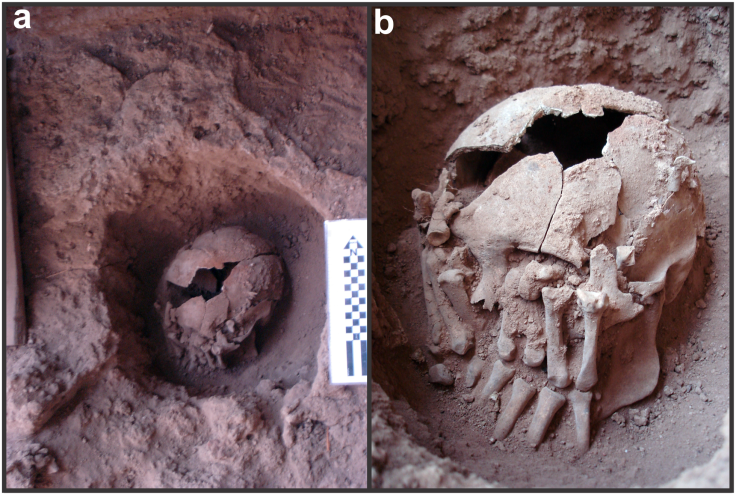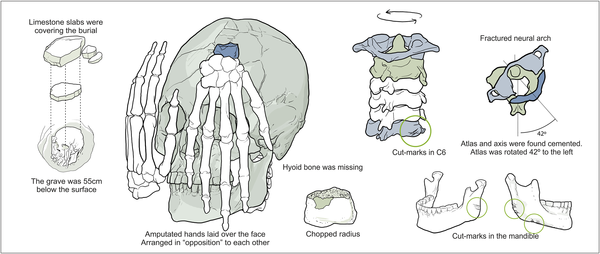9,000 Year-Old Man Found In Brazil Was Decapitated As Part Of A Burial Ritual

The art of human decapitation is one we might have practiced in the Americas for even longer than previously thought, according to a new study published Wednesday in the open access journal PLOS ONE.
Detailing a 2007 excavation of Lapa do Santo, an archaeological site located in east-central Brazil, the study authors explained that they found evidence of decapitation and amputation in the burial grave of a young adult male dated to live sometime around 9,000 years ago. Their discovery may mark the oldest such example of decapitation seen in the New World to date.
Even for being decapitated, the 9,000 year-old individual, formally known as Burial 26, is rather unique. Though there’s a long documented history of human decapitation in the ancient societies that once lived in the Americas, both before and after written records, the common perception is that these decapitations often amounted to trophies of war or were part of an elaborate sacrificial ritual.
Yet the appearance of Burial 26, with his amputated hands juxtaposed onto the unaltered skull such that the right hand cups the left side of the head pointing downwards and the left hand cups the right side upward, suggests a more innocent purpose for his decapitation. As does the fact that 26 appears to be closely related to other people found in Lapa do Santo, implying that he was a local member of the community, rather than some outsider brutally dismembered as an act of war.

“At Lapa do Santo, neither drill holes nor an enlargement of the foramen magnum were observed in the skull, making it unlikely that this was a trophy head,” the authors concluded. “The careful arrangement of the hands over the face is compatible with an important public display component in the ritual that could have worked to enhance social cohesion within the community. This ritualized burial attests to the early sophistication of mortuary rituals among hunter-gatherers in the Americas.”
Apart from being the oldest example of decapitation found in the Americas, 26 is also the first to be located in this particular region. “Until now, every archaeological site in South America where evidence of decapitation was observed was related to the so-called Pan-Andean societies,” the authors explained. “Lapa do Santo, located in the lowlands of east-central South America, indicates that decapitation does not necessarily have a restricted Pan-Andean distribution.”
Far from gruesome, 26’s death may only be a sign of humankind’s seemingly endless desire to give a lasting and beautiful tribute to our mortality. The researchers note though that the only way to actually find out for sure is for further archaeological exploration to be allowed in the region.
“After all, the findings at Lapa do Santo opens the possibility that similar practices occurred in other parts of east South America among other early Holocene hunter-gatherer societies,” they explained.
Source: Strauss A, Oliveira R, Bernardo D, et al.The Oldest Case of Decapitation in the New World (Lapa do Santo, East-Central Brazil). PLOS ONE. 2015.



























